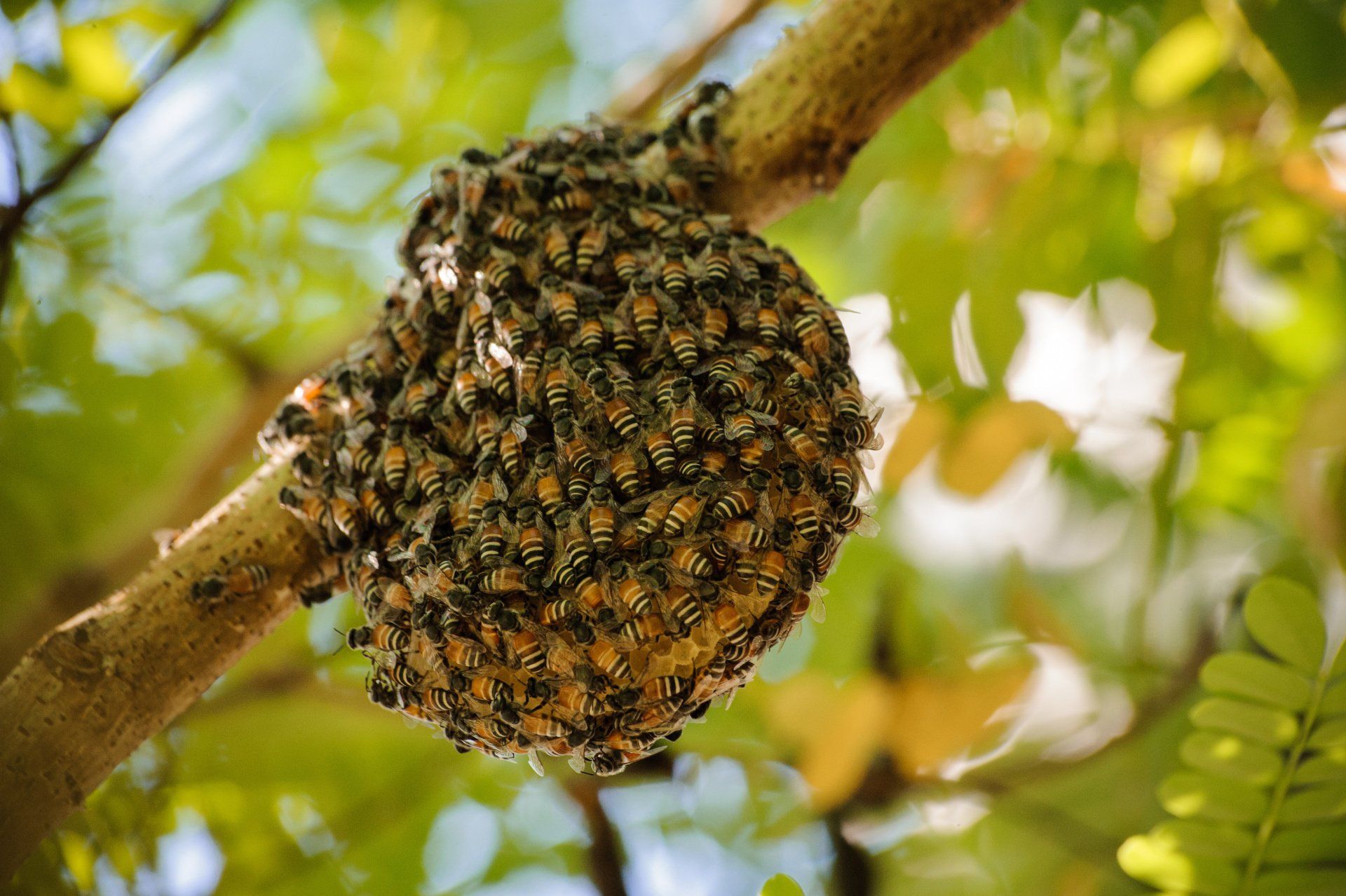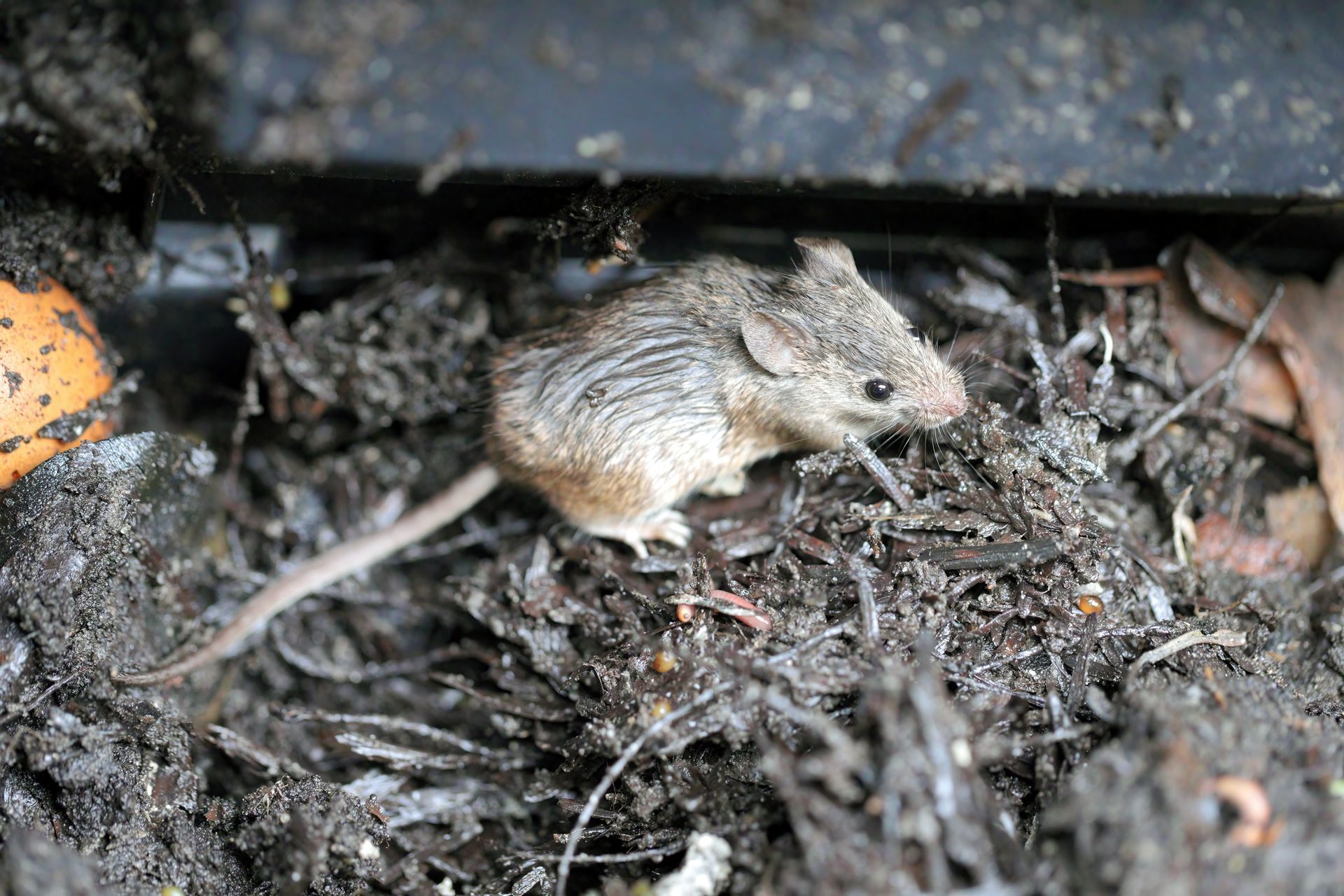When Are Bees Most Active?

Bees are just like many other insects and animals that have seasonal activity. This is largely due to their inability to survive much colder temperatures. When seasons change and temperatures drop, bees are forced to retreat into their hives where they can stay warm enough to survive the winter. When temperatures drop below 50 degrees Fahrenheit, any bees exposed to these temperatures will slow their activity before falling asleep and eventually passing away in the cold. Bees that manage to survive colder periods will become active again when the temperatures rise to levels where they can forage. This period of warming temperatures often aligns with the start of spring which is also when flowers start to bloom. During this period, bee activity will increase as forager bees will be looking for nutrition for the queen and her new batch of eggs.
The Daily Cycle of Bee Activity
Bee activity throughout the day will fluctuate because the temperatures and light availability will be different at different hours. Bees will start their day with the sunrise and peak in the afternoon when the temperature is at its highest. There are other factors, like rain, that may impact a bee’s ability to work during the day, but bees will keep their schedules up as long as the day provides the right environment for them to do their jobs.
What Time of Day Do Bees Come Out?
The time of day that bees typically come out to work is largely dependent on how hot or cold it is. Temperatures generally rise with the sun so most bees will typically start waking up from being dormant as the sunlight warms their hive. During spring, summer, and fall, early morning temperatures in regions bees are active in will surpass the 50 degrees Fahrenheit that bees need to be active. Bees will emerge and start their day long search for pollen and nectar. The early morning dew will saturate the pollen which makes it a little difficult to collect. As temperatures rise during the day, the pollen dries which makes the pollen cling to the bees’ hairs more easily. This time of day is when bees will have the most luck searching out new sources of food.
What Are Bees Active During the Day?
The time-of-day bees are most active depends largely on the role the bee plays in a hive. A bee colony will be active 24 / 7 during warm seasons but will die down when temperatures drop during the winter months. The bees that are always active are worker bees that maintain the hive. They do not leave the hive like forager bees, so they stay warm inside the hive and actively take care of the eggs and help build up the nest. They will take turns sleeping but workers do not have an established schedule so they will continue to work throughout the night. Workers do not leave the hive and remain in dark throughout their lives, so they do not have a sensitivity to light. Forager bees, on the other hand, are only active during the day. Forager bees need to leave the hive, so they are exposed to the elements more frequently and are much more sensitive to light. Foragers use the light to determine how much time they have left to work. They will leave at the first sign of daylight and their activity will peak in the early afternoon. They will continue to work until right before sunset when the declining sunlight indicates that it is time to stop working. Without the right temperatures and enough light, forager bees will return to the nest with the pollen they have collected to rest.
What Time Do Bees Return to Their Hive?
Forager bees will typically end their days before sundown. They generally know how much distance they need to cover to return to the nest before there is no more daylight to navigate so they will stop working with enough time to get back to the hive safely. Bees have infrared vision which gives them an idea of when the sun is starting to set. When this happens, forager bees will stop working and start on their path home. Once forager bees return to the hive, they will provide all the pollen they collected throughout the day and rest until the next day starts.
Do Bees Sleep?
Bees are diurnal insects, so they do need to get sleep in order to function. Forager bees spend all day exerting themselves and typically need between 5 – 7 hours of sleep at night to ensure they are rested enough to carry out their duties the following day. Worker bees don’t have a set time to sleep like forager bees, but they still need to find time to rest. They will generally cycle in and out with other workers because workers need to be constantly working to maintain the hive. Drones are the males in a hive who serve the sole purpose of fertilizing the queen. The drones are lazy and don’t provide much other benefit to the hive. Since they do not contribute much, they spend much of their time sleeping until they are called upon by their queen. Once they mate, the drones will die and be removed from the nest. The queen is another hard-working contributor to the hive. She will spend her days laying eggs and will rest at night with the foragers.
When is Bee Season?
Bee season is pretty much dependent on the temperatures of a given region. In places with moderate temperatures all year round, bees will stay active. In places that experience a colder winter, bee activity will pause as the hive becomes dormant and focuses on surviving the winter. In these colder regions, temperatures will climb in spring. This is usually in March and a bee colony has much work to do to recover from the losses it incurred during the colder months. The queen bee will accelerate egg production and foragers will work extra hard to provide the colony with enough food for the population to grow back to what it was before temperatures dropped. The colony will grow throughout April and May and around this time, a new queen will emerge. When a new queen emerges, part of the colony will swarm and leave in search of a new place to establish another bee colony. Bee activity will peak in summer months when temperatures are at their highest but will start to slow down in September as temperatures start to decline.
At What Temperature Does Bee Activity Drop?
Bee activity will stop all together if temperatures drop too low. Somewhere between 39 – 45 degrees Fahrenheit, bees will become lethargic and enter a state of dormant hibernation. If too much time passes in this temperature range, the bees will eventually starve and die off. It is important for bees to be able to maintain cover inside of their nests where they can help keep each other warm enough to survive long periods in this temperature range.
Contact EcoGuard Pest Management if You Have Seen Signs of Bee Activity
If you have noticed bee activity in or around your home, it may be time to call EcoGuard Pest Management. We offer beehive removal services to ensure that these beneficial pollinators are not harmed while they are removed from your property. Even though bee populations need to be relocated, we understand how dangerous having a beehive close by can be. We take precautionary measures to ensure that bees are safely and effectively removed without damaging the queen or any of the hive.

















